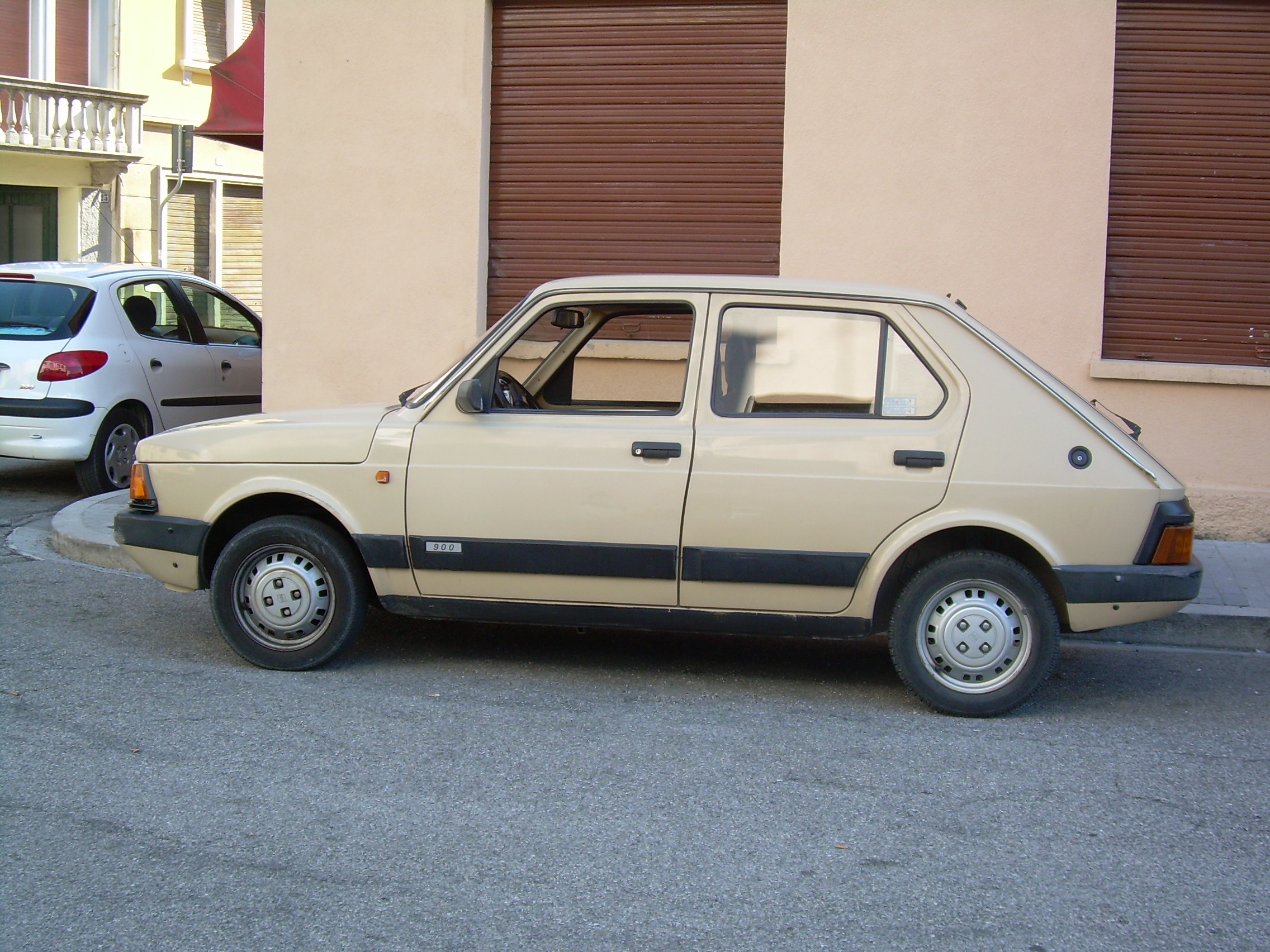SEAT Fura on:
[Wikipedia]
[Google]
[Amazon]

 The SEAT Fura was a
The SEAT Fura was a

supermini car
The B-segment is the second smallest of the European segments for passenger cars between the A-segment and C-segment, and commonly described as "small cars". The B-segment is the largest segment in Europe by volume, accounting for 20 percent of ...
which was produced by Spanish car manufacturer SEAT
A seat is a place to sit. The term may encompass additional features, such as back, armrest, head restraint but also headquarters in a wider sense.
Types of seat
The following are examples of different kinds of seat:
* Armchair (furniture), ...
between 1981 and 1986, and based on the Fiat 127
The Fiat 127 is a supermini car produced by Italian car manufacturer FIAT from 1971 to 1983. It was introduced in 1971 as the replacement for the Fiat 850. Production of the 127 in Italy ended in 1983 following the introduction of its replacement, ...
, which had been built by the firm since April 1972.
Once the license to the 127 had expired, SEAT was forced to develop a new version with a new name which was introduced in end of 1981 for the model year of 1982. It was available in three and five door hatchback
A hatchback is a car body configuration with a rear door that swings upward to provide access to a cargo area. Hatchbacks may feature fold-down second row seating, where the interior can be reconfigured to prioritize passenger or cargo volume. ...
body styles. Sales commenced in January 1982.
The two and four door sedan versions of the Fiat 127 were discontinued. The Fura was never available with the larger 1,010 cc unit which was seen in the SEAT 127, but did receive the five speed manual transmission as standard.
After the facelift of 1983, the SEAT Fura Dos (two) was introduced: it didn’t differ much from its predecessor mainly through smaller headlights and turn signals. The launch of the first generation SEAT Ibiza
The SEAT Ibiza is a supermini car that has been manufactured by Spanish car manufacturer SEAT since 1984. It is SEAT's best-selling car. The Ibiza is named after the Spanish island of Ibiza and was the second SEAT model to be named after a Spani ...
in April 1984 made the car largely redundant.
For slightly more than one year, these two compact hatches competed internally, but the somewhat outmoded Fura was officially discontinued in December 1986. A hot hatch
A hot hatch (shortened from hot hatchback) is a high-performance hatchback car.
The term originated in the mid-1980s; however, factory high-performance versions of hatchbacks have been produced since the 1970s.
Front-mounted petrol engines, ...
called the ''Fura Crono'' was introduced in the beginning of in 1983.
Fitted with spoilers front and rear, as well as twin fog lights
The lighting system of a motor vehicle consists of lighting and signalling devices mounted to or integrated into the front, rear, sides, and in some cases the top of a motor vehicle. They illuminate the road ahead for the driver and increase t ...
up front and unique 13” alloy wheels, it was powered by the 1,438 cc four cylinder. The twin carb engine, the same as used in the Fiat/SEAT 124, provided the top speed of , and the 100 km/h sprint was managed in 10.8 seconds.
The car was also assembled by NASR in Cairo
Cairo ( ; ar, القاهرة, al-Qāhirah, ) is the capital of Egypt and its largest city, home to 10 million people. It is also part of the largest urban agglomeration in Africa, the Arab world and the Middle East: The Greater Cairo metro ...
as the ''El Nasr Super Fura''.
Motorsport
The SEAT Fura ''Crono'' was used in the ''Copa Fura'' one make rally series, which was launched in 1983 and terminated in 1985. The cars were tuned byAbarth
Abarth & C. S.p.A. () is an Italian racing and road car maker and performance division founded by Italo-Austrian Carlo Abarth in 1949. Abarth & C. S.p.A. is owned by Stellantis through its Italian subsidiary. Its logo is a shield with a styliz ...
and produced .
References
Fura Subcompact cars Front-wheel-drive vehicles 1980s cars Cars introduced in 1981 {{Modern-auto-stub Cars of Spain